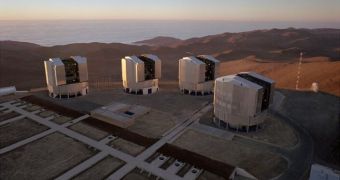When the 8.8-magnitude earthquake struck the central parts of Chile this Saturday, officials at the European Southern Observatory (ESO) were on their toes in no time. The organization has built three large observatories in the Atacama Desert over the years, all of which may have been endangered by the powerful tremor. But the analysis performed over the coming days on the ground-based telescopes showed that no structural damage came to them. There was also no loss of human lives, and the managers for the facilities said that they only experienced minor communication problems and electricity outages, Space reports.
The three major telescope centers are of tremendous importance for the space community, so any damage to them would have been a real shame, analysts say. The facilities were specifically engineered to withstand seismic events, as their builders knew they were constructing the advanced machineries near the Pacific Ring of Fire. This is an imaginary line that passes through the Western coastlines of North and South America, as well as through Japan and other sectors of the ocean. Alongside Chile's coastlines, the Nazca tectonic plate is sinking beneath the South American plate, producing massive tremors at fairly regular intervals.
Because of the sheer size these plates have, tremors happening here are bound to be very strong. The fault systems are also very long, and the potential for a tsunami is great. But the ESO buildings and telescopes were a good distance away from the epicenter of the new earthquake, which was the seventh strongest in recorded history. The earthquake had the epicenter some 201 miles (325 kilometers) Southwest of the capital Santiago, and it killed some 700 people, according to recent estimates. About 500,000 homes there and elsewhere were also destroyed. The number of victims was lower than that recorded in Haiti this January because building codes are more strict in Chile.
“ESO expresses its deepest condolences to the families of the victims, and its sympathy and support to all those affected by the earthquake,” officials at ESO said in a statement. They also told astronomers who had plans to visit the three observation facilities to put them on hold for an undetermined period of time. The observatories and the instruments they contain are extremely sensitive pieces of equipment, and managers need to make sure that no hidden damages occurred.

 14 DAY TRIAL //
14 DAY TRIAL //